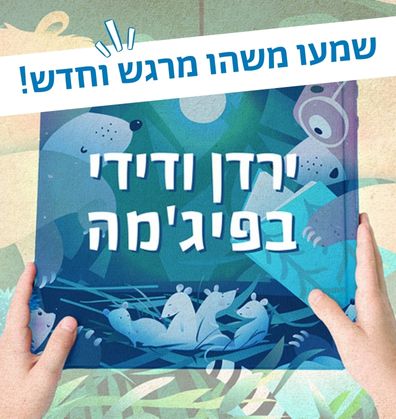סְּפָרִים
Book-Related Family Activities

אז והיום
תוכלו לשתף את הילדים: אילו דברים השתנו מתקופת ילדותכם? או מתקופת ילדותם של סבא וסבתא? מה היה שונה בחיי היום־יום שלכם כילדים? האם גם אז היו דברים שהותרו רק לבנות או רק לבנים?

לנגן אותיות
סעדה למדה לקרוא כשהאזינה לטעמי המקרא, שמלמדים כיצד “לשיר” טקסט ולהדגיש מילים מסוימות. בהשראתה תוכלו להמציא צליל ייחודי לכל אות שמרכיבה את שמכם ו”לנגן אותו”: אפשר לבחור צליל מסתלסל, נמוך או גבוה. לאות מ”ם למשל תוכלו לבחור צליל מתמשך כמו כשאוכלים דבר טעים “ממממ “…

מכינים פיתות כמו סבתא סעדה
מצרכים
2 כוסות קמח
1 כפית גדושה שמרים יבשים
1 כוס מים פושרים
1 כף שמן זית
1.5 כפיות מלח
אופן ההכנה
מניחים בקערה את הקמח, השמרים והמלח ומערבבים היטב. מוסיפים את המים בהדרגה ומערבבים עד קבלת בצק נוח. מוסיפים את השמן והמלח ולשים את הבצק בעזרת הידיים. מכסים במגבת. לאחר עשר דקות מחלקים את הבצק לשישה-שבעה כדורים. בעזרת מערוך מקומח מרדדים כל כדור לפיתה בעובי כחצי סנטימטר. מניחים את הפיתה במחבת חמה מאוד, כל צד כשתי דקות.

האזינו לסיפור "אותיות ומנגינה"
האזינו לסיפור “אותיות ומנגינה” בהסכת “ספריית פיג’מה קוראת לכם”

מזהים אותיות
תוכלו להביט באיורי המנגינות שסעדה שומעת ולזהות את האותיות המסתלסלות בניגון. אילו אותיות זיהיתם?


Discussion – Our Hanukkah
Hanukkah has been celebrated by Jews worldwide throughout the generations. You can discuss your own Hanukkah family traditions – Do you have any special customs? Are they similar to the Hanukkah customs commonn in Alaska? Have you ever celebrated Hanukkah in an unusual situation or extraordinary location?

Spreading light inside and out
This book can inspire you to take an evening stroll and look at the lights around you: the stars, moon, street lights, and perhaps even the menorahs that others have lit – how many lights do you see? For every source of light you discovere outside, mention one thing that makes you happy, stronger, or spreads the light in your life.

Hanukkah Anywhere in the World
Where would you like to light Hanukkah candles today? Somewhere special in Israel? How about in snowy Alaska? You can make a world map and play an amusing game in which you pretend to light Hanukkah candles in a different location each day! What can you see around you? What will you be eating besides latkes and doughnuts? Which local customs will you incorporate into your holiday?
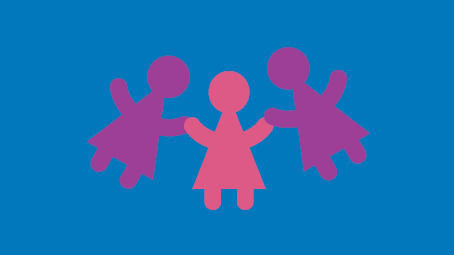
The northern lights
You can look at the illustrations in this book and be inspired by them to use magic markers and colored pencils to make your own dazzling aurora.

QR code
Do you want to know more about the northern lights? Scan the QR code and watch a video on the spectacular aurora.

Childhood memories
The grandfather’s friends tell his grandchild about the boy his grandfather once was. Take a moment to share with your child too about the childr you once were, what you liked to do, what you miss, and share childhood photographs. You can also ask your child: What would you tell about yourselves when you were younger? What memories are particularly joyful or moving?
A song from the land of childhood
This book can inspire you to introduce your child to songs that remind you of your childhood or the place where you grew up. You can listen to old songs together and ask: Do you also have songs that remind you of things?

“Buenos Dias”
When the grandfather and father in this book speak to one another in Ladino, the child feels as if they are sailing away together to a faraway land. It is very exciting to understand, know, and utter words in a foreign language. Throughout the book, words and phrases appear in Ladino; you can go back and look for them in the book, then try to pronounce them together, and look .up their meaning

QR code
Scan the QR code and listen to the book Trees Waiting for Rain on the Sifriyat Pijama podcast. We recommend following along with the book while listening.

By which to remember where you came from
After reading this book, you can discuss the importance of family. Share memories of intimate and special moments shared with grandparents. You can discuss your family’s roots, cuisine, and culture, as well as any heirlooms and items that are passed in your family.
My Own Special Reminder
Do you also want to have an item to remember things by and help you overcome difficulty and loss? You can use beads to make a necklace or bracelet, paint a pebble, or any other good idea, and then decide what to do with this it to be reminded of something or cheer up: Twist it? Squeeze it? Stroke it? Move it to your other hand?

Homemade Cookies
Which cookies remind you – the parents – of your childhood home? This book can inspire you to bake cookies together, or prepare any other dish that connects you to your roots, family, and home.
Listen to the Story
Listen to Yarden and Didi tell the story of Shoham’s Bangle on the Sifriyat Pijama podcast.

Arts & crafts, songs, and other activities can be found on the Sifriyat Pijama Pinterest page.

Family Reading Advice
Books written from the protagonist’s point of view invite us to take a closer look at the way others experience the world.
A glimpse into the world of others can make us identify with their feelings and emotions, discover that there are others who experience things the way we do, and cultivate empathy as well as sensitivity toward others.

Communication Beyond Words
What would you have said to Nino had you met her during her first few days in Israel? How would you have spoken to her? How would you have cheered her up? Have you ever encountered difficulties communicating with someone? Have you ever felt that no one understands you? What other ways are there to communicate when words are not enough?
QR Code
Scan the code to hear the story on the “Sifriyat Pijama” podcast. Did you know this podcast helps children from immigrant families listen to books when at home.

What Can We Wee Outside Our Window?
What is the view from your window? How would you describe it to a friend who lives in another country? You can look out your window at home and describe what you see in words, movement or art.

A Song in Another Language
Try listening to a children’s song in another language together. You can move to the rhythm of the music, guess what the song is about, or make up your own lyrics.
Family reading advice
Simachi’s Big Day is a long book. We therefore recommend reading it in two parts, pausing at the point where Simachi wonders why her brother, Avram, is dressed in his best clothes, and reading the rest the next day.
Memories
In this book, Grandma is recalling her childhood memories. This is your chance, as parents, to share special moments from your own childhoods too. Talk about the things you did, those you never thought you would do, or the relationship between you and your siblings. Ask your children: Can they recall special things they did and, looking back, surprised them because they made them discover their own abilities?
Listening to Simachi
What does the story sound like? Scan the code and listen to the story while looking through the book.
A pineapple on my head
Avram and Nemi play a game by walking with a pineapple on their head and seeing who lasts longer without dropping it. You can also play a similar game: choose an item that you can put on your head – a pillow, toy or box, and find out: Which of you can walk while keeping it on your head? And how far?
Following the sea
The book describes many seaside activities: the fish moving, rowing, swimming, bringing fishnets in, sailing or flying a flag on the boat’s flagpole. You can choose one of these activities, and mime it. Your family will need to guess which activity you meant, and look for it among the book’s illustrations. Good luck!
Discussion – How can we cheer ourselves up?
“Even in rough times – Shmulek can count on his harmonica” –What helps you during hard times? You can discuss and share ideas on how to cheer yourself up when you are sad or times are hard: It can be a tune, a dream, or a hug from someone you love.

Heartbeats of memories
Which songs are your favorite? You can listen to songs you like when you are sad or happy, in the morning , or those that help you fall asleep. You may want to create a family soundtrack of favorite songs to listen to when the mood is right.

A dream box
Shmulek places his teeth that had fallen out in a box. You can also find a box, decorate it, and place special objects in it, such as treasures that you have found, or paintings of dreams that you would like to make come true.
A discussion on stories that “once were”
Following this book, you could also raise memories and tell stories that “once were” – a childhood story of yours, parents, or one told by Grandma or Grandpa about the old days.
Listening to the story
You could listen to the story together or separately; all you have to do is scan the QR code and… let the magic begin!
Suitable for families of Olim too.
Look how we have grown!
The tree grew, as did Rebecca. And how about you? Perhaps you would enjoy watching videos and looking at photographs to see how both children and parents have grown and changed. You could even discuss the kinds of actions that your children were able or unable to do in the past.
Orange sponge cake
Would you like to bake a cake? All you need are two eggs, one third of a cup of sugar, one third of a cup of oil, half a cup of fresh orange juice, a cup of flour (or substitute) and one teaspoon of baking powder. You could also add the grated zest of half an orange.
Mix all the ingredients in order and place in an oven preheated to 180 degrees Celsius. Bon Appetit!
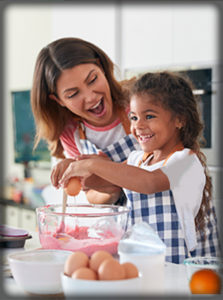
Discussion
Following the childhood story the father tells his child in this book, you could also share memories and stories from your own childhood with your child: Where did you grow up? What did you like doing? Which songs and stories accompanied you? What were your hobbies? Did you have any household chores or special roles to play within your family? Perhaps you had some pets?
You could also look at the illustrations in the book, choose your favorite one, and share your choice with each other.
A family story
How about asking some family members to share their stories of life transitions with you? Which countries have they lived in? how did they end up in Israel, and how was their absorption? Did they move into a new community upon making Aliyah? You could act the stories you were told out, or tell them using a song and dance.
A magical tune
Melodies can have a profound effect on us. In the spirit of this book, you could listen to different tunes together, close your eyes, “enter” the melody, and dance to it.
Jerusalem of Gold
At the end of the book, Jerusalem is depicted as golden, just as it was in the Ethiopian immigrants’ dreams. The phrase ‘Jerusalem of Gold’ was mentioned in Jewish scripture as the name of the golden jewel that Rabbi Akiva gave his wife, etched with the image of Jerusalem. Inspired by it, Naomi Shemer wrote the lyrics and music to her song, so entitled, which became one of the most well-known and loved Israeli songs. Perhaps you could ask your child why they think Jerusalem was called that, listen to the famous song together, or play it as an ensemble.
Proposed Family Activities:
- This book is based on a true story. Perhaps your child could read it with a member of an older generation, such as a grandparent, uncle or aunt. Wouldn’t it be wonderful if by doing so, you will learn some family stories you had not heard before? It may be advisable to make an audio, video or hand-written record of them!
- You may enjoy leafing through the book together and pointing out signs of the time that have been incorporated into the illustrations. Perhaps you could look for old photographs of family members at home, and focus on the clothes, hair styles, and various objects they had back in their homelands.
- Where has your family come from? How many generations has your family been living in Israel? You may want to open an atlas, place some tracing or parchment paper on top of the world map, and draw arrows on it to mark the journey made by your family before coming to Israel. You could also use online software, such as Google Maps, to take a virtual tour of your family members’ homelands.
- Do you also have a personal or family dream? It may be fun for each member of your family to write down their dream on a piece of paper, insert it into an empty bottle, and seal it with a cork or top. You can return to your bottles in a year, and check whether the dreams you wrote came true.
- The new olim in this book have different customs, languages, and clothes. Sometimes, different customs, clothes, and traditions can be found within the same family. How about teaching your children some words in their grandparents’ mother tongue? Or reminding one another of your special family traditions and songs.
- The two new olim in the book sing a liturgic song together, originating in Psalms and found in the Hallel prayer:
“בצאת ישראל ממצרים בית יעקב מעם לועז…”
Do you know the tune to this song? How about singing it together? You could also look up other tunes online at www.zemereshet.co.il.
read this book together
You may want to read this book together, pause, and ask your child to tell you what they think is happening at that point in the story. How far along were you when you figured out where the grandmother and grandson were going, who the people in the black suits were, and what their cases contained?
• The grandmother and grandson in this book are spending time together
The grandmother and grandson in this book are spending time together. A special connection is often forged between children and their grandparents, that is unlike the relationship between parents and children. Can you recall a special time spent with your grandma or grandpa? You may want to share your childhood memories with your child, and discuss their relationship with their grandparents, aunts, or uncles.
playing a game
The authors depict the concert in the sand through a detective story, in which the grandmother does not tell her grandson where they are headed. Having read the book together, you may want to suggest playing a game in which your child will take you somewhere without disclosing your destination. Your child can prepare clues along the way, much like a treasure hunt.
What kind of music do you like listening to?
During the first concert, the orchestra played pieces by Schubert, Brahms, Mendelssohn, and others. What kind of music do you like listening to? Does anyone in your family play a musical instrument, or is learning to play one? Having read this book together, you may also enjoy attending a concert together, or even holding one of your own at home. There are many roles to be played at a family concert – musicians, conductor, and audience.
Bronislaw Huberman
Not too many people know the story of Bronislaw Huberman. Numerous men and women have been courageous and done great deeds for which they have not become famous. Perhaps you can think of another historical figure that you have heard about or known personally, whose story you would like to share with your child. You could even make a short storybook about them, and send it to us.
The five senses
The five senses: You may enjoy reading this book together, and trying to discover with your child how sight, hearing, taste, smell and touch help Alicia’s mother preserve her memory of the snow she misses so much. Can you find where all five senses appear in the story together?
When we were kids…:
When we were kids…: Alicia’s mother misses her childhood snow. What do you miss? Which of your childhood stories does your child know? What has changed since you were kids, and which of your child’s experiences are similar to the ones you have had? Perhaps this story could prompt you to share your childhood memories with your child, and compare your experiences.
Aliyah stories
Aliyah stories: You may want to search for your family members’ country of origin in the atlas together, and trace their journey to Israel. Which challenges and successes did they experience on the way? What do they like about Israel, and what about their faraway country do they miss? You could look for old pictures, clothes or other items, and share family immigration stories with your child.
Remembering with your senses
Remembering with your senses: Alicia’s mother says snow has a taste and smell. Perhaps you would like to close your eyes and go on a journey together; remembering the scents, flavors, sounds and sights of the swimming pool or beach in summer, of rain on the window pane in winter, of home on the eve of a Holiday, and so on. You could choose one shared memory and draw it together.
A personal gift – not just on your birthday
A personal gift – not just on your birthday: how do we pick a good gift? We try to understand what others like, and might make them happy! Perhaps you could think of a family member or neighbor, and make them a special, personal gift that would surprise and delight them.
Memory box
Memory box: Perhaps you might like to take a walk around your house and yard, and try to think what you would remember about them in a few years’ time. What would you miss? You may enjoy making a memory box together, and filling it with the scents and tastes of home – a much-loved family recipe, soap-scented stationary, a family photo, and other memories that would be fun to remember in the future.
Activities:
- Tell your child a family story – one that is funny or special – that is worth preserving as family legend: for example, a story of your childhood. Include details that say something about the place and time when the story took place. Look in a family album together at places where your child’s grandparents grew up and point out aspects of the past, such as: “Here is the bakery of your great grandfather that made the best challah in the world…”
- Travel back in time: To prepare for time travel back to Joseph’s village, look together at the illustrations in the book and encourage your child to identify items in his world. You can ask leading questions, such as: What does Joseph have in his house? What animals roamed around his neighborhood? Were there any buses there? What did people wear? In short: Was his world similar to ours? No? In your child’s opinion, why or why not?
- The fun of traditional sayings: The saying “When a coat is old, only its holes are new” is framed on the wall in Joseph’s house (see the page which begins, “Joseph had an old vest…”). The saying reflects Yiddish humor. Make a similar wall hanging with a saying that comes from your family or from your heritage. Who used to say it and on what occasions? Write the saying out and let your child make illustrations around it.
Eze’hu Ashir? Ha’sameach Be’chelko (Who is rich? He who is happy with his lot.)
In the Ethics of the Fathers (chapter 4), it is written: “Who is rich? He who is happy with his lot.” This proverb teaches that happiness is not measured in things or money, but rather in our ability to enjoy what we have. Although Joseph is poor, he is rich because he knows how to enjoy every “new” item of clothing he creates from what has worn out.
Activities:
- Look at the pictures and follow Joseph’s moods. When and why is he sad? When and why is he happy? What is his mood at the end of the book? How does your child explain these moods?
- Create two lists with your child: one of things that made him happy today and one of things that bothered him or made him sad. Look at the list of sad things and try to find something positive in the sad. In the evening just before your child goes to bed, you can make a habit of exchanging a list of the good things that happened to each of you that day.
Bal Tashchit (Respect for Existing Resources)
The mitzvah of bal taschit which appears in the Torah (in Deuteronomy) prohibits destroying a fruit tree even during a siege on a city. Over time a broader interpretation has come to prevail, to avoid destroying anything which can still be useful. Joseph’s Wonderful Overcoat takes place in a time when resources were scarce and people had to make good use of everything they could. Joseph found creative ways for re-using his coat. Today, in our era of abundance, there is an increasing tendency to try and re-use things to prevent harming the environment. This book provides a good opportunity to discuss with your child ways of limiting harm to the environment.
Activities:
- Ask your child to identify items at home whose use has changed over time and are used for something different: for example, a cracked plate that is used under a plant, a cup that is used for flowers etc.
- Talk to your child about the concept of wasting: What does it mean to waste? Do we throw away things that we could still use? What can we do to limit wastefulness?

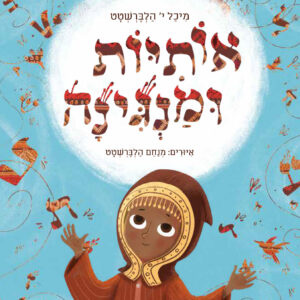 Letters and Melody
Letters and Melody 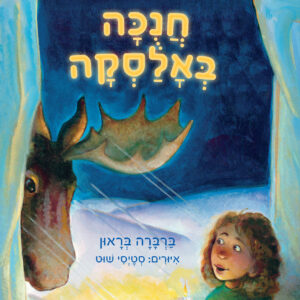 Hanukkah in Alaska
Hanukkah in Alaska 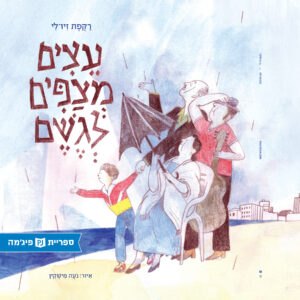 Trees Wait for Rain
Trees Wait for Rain 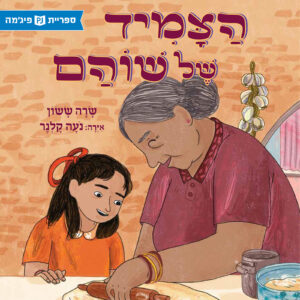 Shoham’s Bangle
Shoham’s Bangle 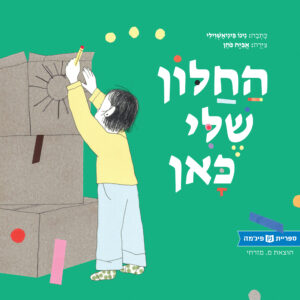 My Window is Here
My Window is Here 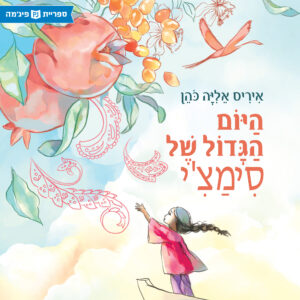 Simachi’s Big Day
Simachi’s Big Day 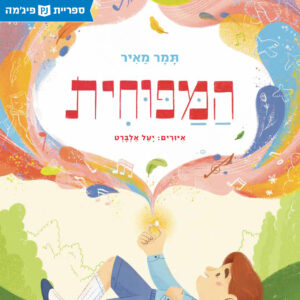 The Harmonica
The Harmonica 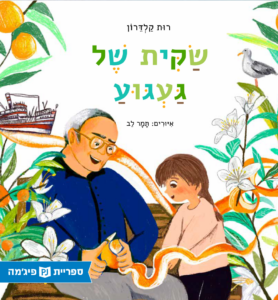 A Bag of Longing
A Bag of Longing 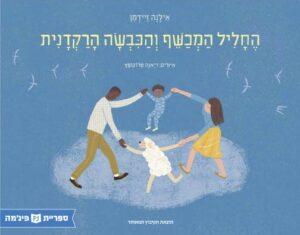 The Magic Flute and the Dancing Sheep
The Magic Flute and the Dancing Sheep 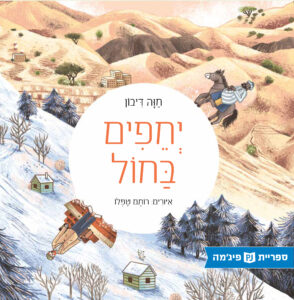 Barefoot in the Sand
Barefoot in the Sand 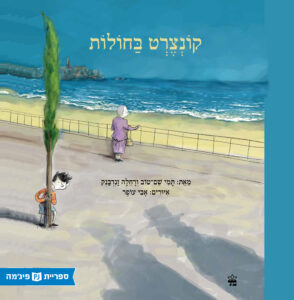 A Concert in the Sand
A Concert in the Sand 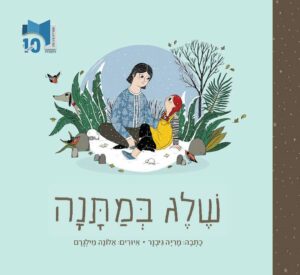 A Gift of Snow
A Gift of Snow 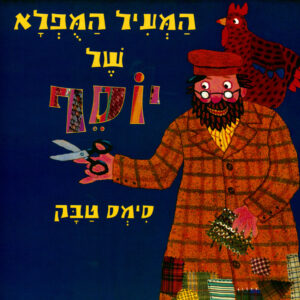 Joseph’s Wonderful Overcoat
Joseph’s Wonderful Overcoat 




